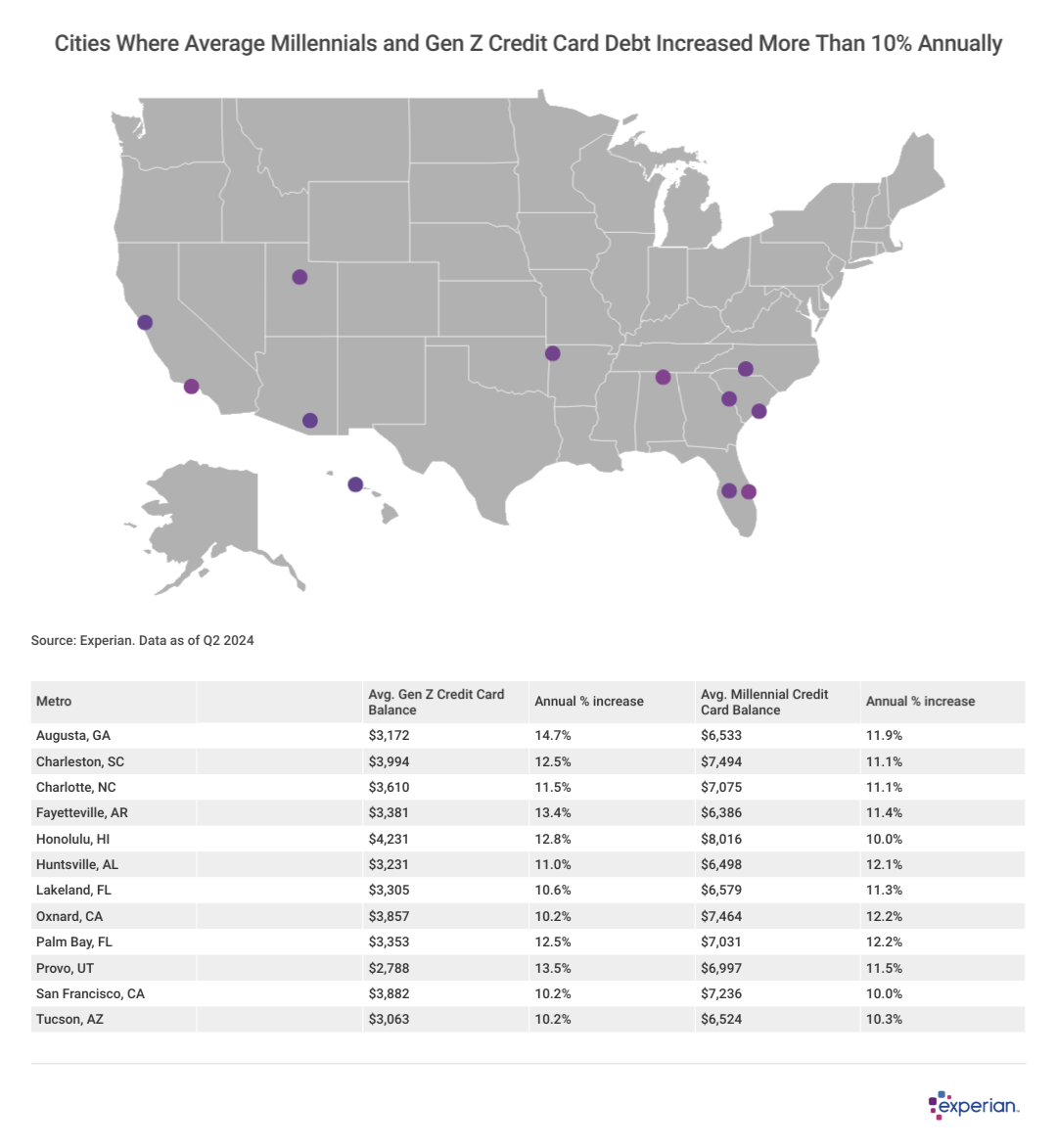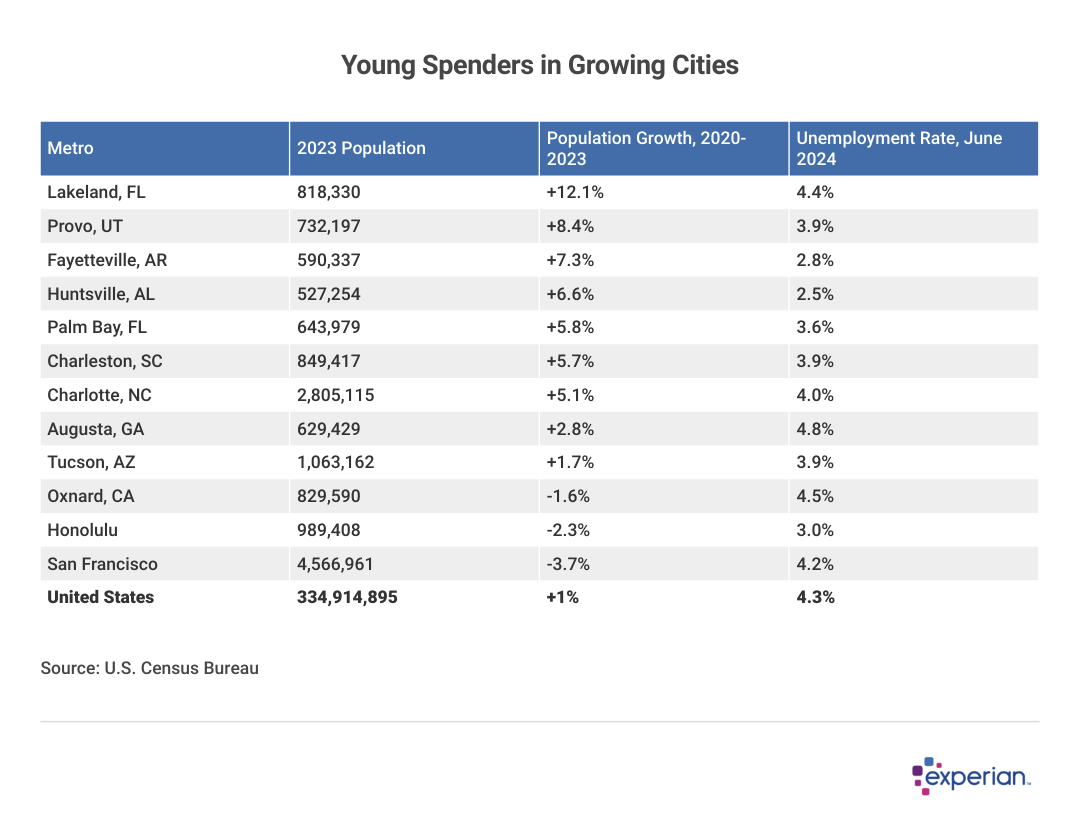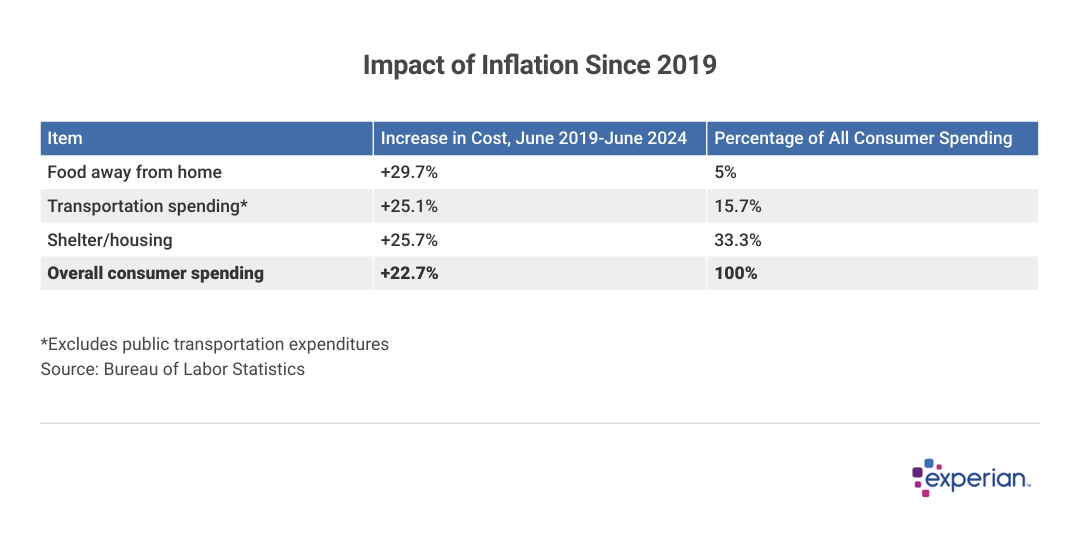Cities where Millennials and Gen Z have the highest credit card debt

Jose Calsina // Shutterstock
Cities where Millennials and Gen Z have the highest credit card debt
A group of young women dining out and one of them pays with a credit card.
Credit card balances are increasing for just about everyone, but younger consumers are seeing average balances spike faster than others, Experian data shows. As of June 2024, average credit card balances for millennials have grown by 8.7% to $6,819 and by 8.2% to $3,407 for Generation Z consumers annually, outpacing the balance growth among older consumers.
Possible explanations for the outsized increases among younger consumers vary. Some increased borrowing can be expected entering adulthood, since all those “firsts” often come with hefty price tags. And the costs of entering adulthood have increased significantly this decade on expenses that go well beyond the price of a morning beverage.
In this update, Experian identified the 12 metro areas where the youngest generations of consumers — millennials and Generation Z — are spending even more than their counterparts living elsewhere in the U.S.
![]()

Experian
12 Metros Where Card Balances Are Increasing the Most for Millennials and Gen Z
Table showing data on “Average Credit Card Balance by Generation”.
Noting one generation in a city with rapidly rising credit card balances might be waved away as a statistical blip. However, if everyone under the age of 44 with credit card debt is collectively carrying significantly more credit card debt than the population at large, then it appears more than likely there may be local conditions feeding the added debt burdens in some cities.

Experian
Cities Where Average Millennials and Gen Z Credit Card Debt Increased More Than 10% Annually
Data via map and table listing “Cities Where Average Millennials and Gen Z Credit Card Debt Increased More Than 10% Annually”.
San Francisco and Honolulu are the two largest metros on this list of cities where younger consumers saw the biggest rise in credit card statement balances. Both metros are notoriously expensive no matter the economic climate, so it’s probably not too much of a surprise to see credit card balances increase significantly more than the overall nationwide increase of 5.2%.
But for the majority of other metros, one explanation dominates: Growth. Wherever younger people are spending and borrowing more on their credit cards than elsewhere, the more likely the metro is booming, both in population and economic activity.

Experian
Younger Consumers Face Equal or Greater Financial Burdens
Table showing data on “Young Spenders in Growing Cities”.
It’s not as though younger credit card users are spending more than others because of outright consumerism — there are other expenditures at play, as mentioned previously.
Auto costs, for example, don’t discriminate by age or financial situation: A Toyota Camry costs as much for a 30-year-old driver earning $50,000 a year as someone who is twice as old and earns twice as much. Experian data shows that younger and older drivers owe similar amounts on the auto loans they carry, which isn’t the case for most other types of consumer loans.
Indeed, if anything, age and credit conspire to make the costs of driving and insurance for a Camry more expensive for those just starting out: Premiums tend to be higher, and credit scores lower, than for older drivers. (Take heart; at least gasoline still costs the same for combustion engine drivers of all ages.)
Younger consumers tend to be renters as well. Unfortunately for those living in faster-growing metros, the rental inventory doesn’t always keep up with the population growth.

Experian
Pandemic-Era Cost Increases Approach 30% in Some Categories
Table showing data on “Impact of inflation since 2019”.
While you might be able to save a few bucks bringing coffee from home, there’s no dodging the increase in housing costs, which now account for a third of a typical consumer’s spending today, according to the Commerce Department.
Other items costing more than a hand-crafted beverage, like car insurance premiums, are also pressuring consumers behind the wheel, especially younger consumers who typically endure higher premiums no matter what vehicle’s being insured.
Methodology: The analysis results provided are based on an Experian-created statistically relevant aggregate sampling of our consumer credit database that may include use of the FICO® Score 8 version. Different sampling parameters may generate different findings compared with other similar analyses. Analyzed credit data did not contain personal identification information. Metro areas group counties and cities into specific geographic areas for population censuses and compilations of related statistical data.
This story was produced by Experian and reviewed and distributed by Stacker Media.